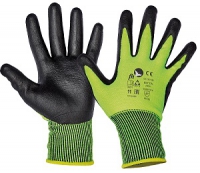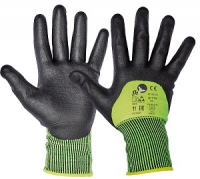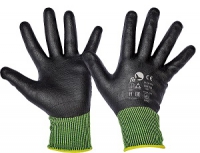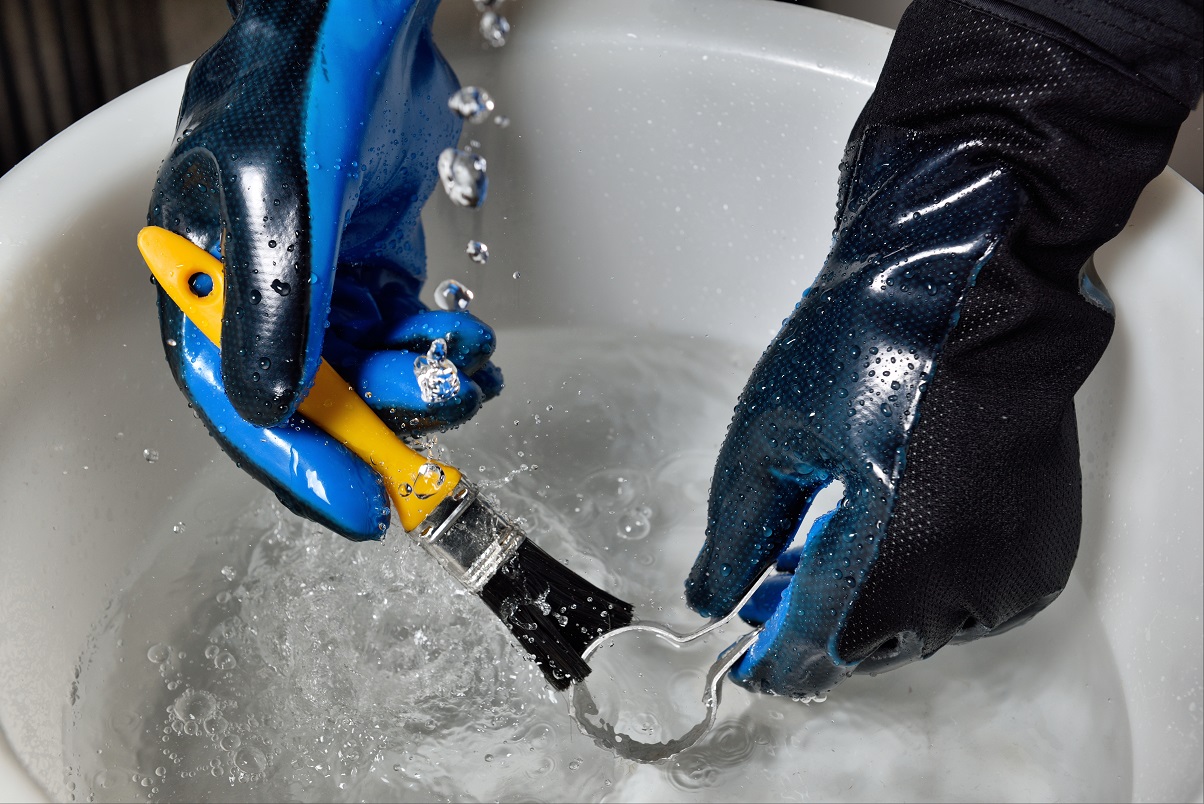Against cut, graze, burn, cold, perforation, spill of chemicals, electrical discharge - gloves can provide more protection than you might think. But first you must investigate which risks you are exposed to. Analyse also the least likely risks.
Which important aspects do you have to bear in mind when choosing work gloves? The basic standard is EN388 - mechanical risks. This standard has undergone a long planned, major review in November 2017. Let's have a closer look at the changes made and the current requirements imposed by the standard.
The initial, 14-year old standard included a pictogram with just 4 numbers. The updated standard can have up to 6 numbers.
- The first number determines abrasion resistance using a scale from 1 to 4 (where 4 is the most resistant).
- The second number indicates blade cut resistance using a scale from 1 to 5. If you see "x" at the second position, it means that the blade was blunted during the test.
- The third number shows tear resistance using a scale from 1 to 4.
- The fourth position determines puncture resistance - scale from 1 to 4.
- The new, fifth digit indicates the cut resistance of the glove when tested under EN ISO 13977. This test is mandatory for every glove where the blade was blunted. The result is shown with letters A-F, where F is the highest level of cut protection.
- The number at the 6th digit now indicates impact resistance. If the glove passed the test successfully, you will see the letter P at this position. If you cannot
If you find "x" at any position, it means that the glove did not pass the respective test or the test is not applicable to the glove in question.
In addition to the new marking, the testing method itself has changed as well.
- There is a new testing method for blade cut resistance - the so-called TDM-100 is now used. This is a test in which sliding blades are used - this means that a fresh blade is used for every new test, thus avoiding any distortion due to knife blunting.
- The abrasion testing method was improved, currently using a standardized abrasive paper, thus avoiding any distortion due to the use of various papers.
- A new impact testing methodology is also used - the initial standard required tests for the palm and finger parts of the glove only. Now the test includes also the back, which helps the users to choose the correct gloves and prevent injuries.
Once you know the meaning of the different numbers, choosing the correct gloves will be a piece of cake for you. The manufacturers still have little less than 2 years to comply with the standard, but you can follow it now already. The following gloves from our product range, for example, successfully passed the tests under the new standard: Sitta Palm, Sitta 3/4, Sitta Full or Stonechat.
| Sitta Palm | Sitta 3/4 | Sitta Full | Stonechat |
 |  |  |  |





























































